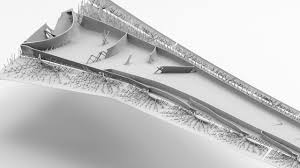
Breaking News
 Trump pardons Mets legend, 'Celebrity Apprentice' alum Darryl Strawberry over tax evasion co
Trump pardons Mets legend, 'Celebrity Apprentice' alum Darryl Strawberry over tax evasion co
 You WON'T BELIEVE How Much Money We're REALLY Sending To Israel!
You WON'T BELIEVE How Much Money We're REALLY Sending To Israel!
 China CANCELS U.S. Soybean Order?! Joel Salatin
China CANCELS U.S. Soybean Order?! Joel Salatin
 Ep 38 Jonathan Haidt: on The Anxious Generation: Childhood in Social Media Age & Fragile College ...
Ep 38 Jonathan Haidt: on The Anxious Generation: Childhood in Social Media Age & Fragile College ...
Top Tech News
 HUGE 32kWh LiFePO4 DIY Battery w/ 628Ah Cells! 90 Minute Build
HUGE 32kWh LiFePO4 DIY Battery w/ 628Ah Cells! 90 Minute Build
 What Has Bitcoin Become 17 Years After Satoshi Nakamoto Published The Whitepaper?
What Has Bitcoin Become 17 Years After Satoshi Nakamoto Published The Whitepaper?
 Japan just injected artificial blood into a human. No blood type needed. No refrigeration.
Japan just injected artificial blood into a human. No blood type needed. No refrigeration.
 The 6 Best LLM Tools To Run Models Locally
The 6 Best LLM Tools To Run Models Locally
 Testing My First Sodium-Ion Solar Battery
Testing My First Sodium-Ion Solar Battery
 A man once paralyzed from the waist down now stands on his own, not with machines or wires,...
A man once paralyzed from the waist down now stands on his own, not with machines or wires,...
 Review: Thumb-sized thermal camera turns your phone into a smart tool
Review: Thumb-sized thermal camera turns your phone into a smart tool
 Army To Bring Nuclear Microreactors To Its Bases By 2028
Army To Bring Nuclear Microreactors To Its Bases By 2028
 Nissan Says It's On Track For Solid-State Batteries That Double EV Range By 2028
Nissan Says It's On Track For Solid-State Batteries That Double EV Range By 2028
Watch a supercomputer design a radical new wing for airplanes

Using a tool called topology optimization, they enlist computers to snip as much material as possible from the inside of objects, reducing the number of spokes on a bicycle wheel, for example. But current methods can only optimize simple objects such as brackets and pipes. Now, a team of researchers says it has created a new method of paring down large-scale objects. The trick is resolution. Three-dimensional images are measured in voxels, a bit like computer images that are measured in pixels. In the past, the resolution of optimized 3D models was limited to 5 million voxels, but the new program—reported today in Nature—can optimize objects up to 1 billion voxels in size. The engineers put the system through its paces by feeding it the wing dimensions from a Boeing 777 airliner. A supercomputer crunched the numbers for 5 days and produced a new design: a wing with a radical internal structure that is kept solid through curved wing spars and diagonal ribs, instead of the gridlike internal ribbing present in standard airplane wings. The new, more hollow wing weighs 5% less than the wings currently in use on the 777, which could save 200 metric tons of fuel per year. Because of its incredibly complicated design, the wing is currently unfeasible for manufacturing. But in the future, new methods of 3D printing could allow engineers to build similar extreme wing designs.

 Carbon based computers that run on iron
Carbon based computers that run on iron

